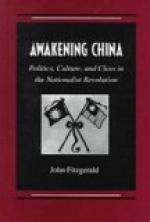Tibet is the land of the Grand Lama. Is it merely tributary or is it a portion of the Chinese Empire? This is a question that has been warmly agitated during the last two years—brought to the front by Colonel Younghusband’s expedition and by a treaty made in Lhasa. Instead of laying their complaints before the court of Peking, the Indian Government chose to settle matters on the spot, ignoring the authority of China. Naturally China has been provoked to instruct her resident at Lhasa to maintain her rights.
A presumptive claim might be based on the fact, that the Grand Lama took refuge at Urga, where he remained until the Empress Dowager ordered him to return to his abandoned post. China has always had a representative at his court; but his function would appear to be that of a political spy rather than an overseer, governor, or even adviser. Chinese influence in Tibet is nearly nil. For China to assert authority by interference and to make herself responsible for Tibet’s shortcomings would be a questionable policy, against which two wars ought to be a sufficient warning. She was involved with France by her interference in Tongking and with Japan by interference in Korea. Too much intermeddling in Tibet might easily embroil her with Great Britain.
In one sense the Buddhist pope may justly claim to be the highest of earthly potentates. No other sits on a throne at an equal elevation above the level of the sea. Like Melchizedeck, he is without father or mother—each occupant of the throne being a fresh [Page 63] incarnation of Buddha. The signs of Buddhaship are known only to the initiated; but they are supposed to consist in the recognition of places, persons, and apparel. These lamas never die of old age.
While in other parts of the Empire polygamy prevails for those who can afford it, in Tibet polyandry crops up. Which is the more offensive to good morals we need not decide; but is it not evident that Confucianism shows its weakness on one side as Buddhism does on the other? A people that tolerates either or both hardly deserves to be regarded as civilised.
The Chinese call Tibet the “roof of the world,” and most of it is as barren as the roof of a house. Still the roof, though producing nothing, collects water to irrigate a garden. Tibet is the mother of great rivers, and she feeds them from her eternal snows. On her highlands is a lake or cluster of lakes which the Chinese describe as Sing Su Hai, the “sea of stars.” From this the Yellow River takes its rise and perhaps the Yang-tse Kiang. A Chinese legend says that Chang Chien poled a raft up to the source of the Yellow River and found himself in the Milky Way, Tienho, the “River of Heaven.”
Fifty years ago two intrepid French missionaries, Huc and Gabet, made their way to Lhasa, but they were not allowed to remain there. The Chinese residents made them prisoners, under pretext of giving them protection, and sent them to the seacoast through the heart of the empire. They were thus enabled to see the vast interior at a time when it was barred alike to traveller and missionary. Of this adventurous [Page 64] journey Huc’s published “Travels” is the immortal monument.




